Tags: water
Fish Monitoring Seining Program Continues in 2019
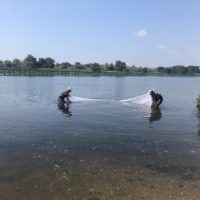
Throughout August, Freshkills Park researchers have been monitoring the diversity of fish species in the park’s Main Creek. This research has been ongoing since 2016 as a means of staying up to date on the health and quality of the aquatic ecosystems at the park.
...MOREThe Staten Island Bluebelt Expands Again
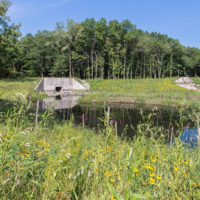
The NYC Department of Environmental Protection (DEP) and Department of Design and Construction (DDC) recently completed the Sweet Brook system, the largest expansion to date of the Staten Island Bluebelt. The Bluebelt is an innovative, ecologically protective and cost-effective stormwater management system that minimizes flooding and improves water quality in 16 watersheds on Staten Island.
...MOREStudents Learn About Water Quality at Freshkills Park
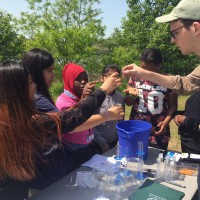
This May and June, over 100 students and teachers from Staten Island travelled to Freshkills Park to volunteer in the introductory phase of a new water monitoring program. They were studying the quality of Main Creek, a tidal waterway that runs through the park.
...MORESaw Mill Creek and the First NYC Wetlands Mitigation Bank
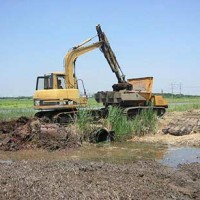
New York City is in the process of creating its first wetland mitigation bank in the marshlands surrounding Saw Mill Creek on Staten Island. Saw Mill Creek, a tributary to Prall’s Creek and the Arthur Kill, is encircled by the largest expanse of remaining salt marsh along Staten Island’s west shore.
...MORECitizen Science: Water Monitoring Project for Students
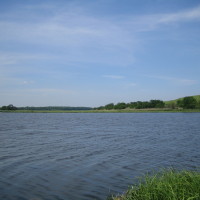
This spring, 6th-12th grade students in Staten Island will have the chance to participate in a Citizen Science water monitoring project at Freshkills Park. The project will be overseen by Manager of Science and Research Development Cait Field and fellow NYC Department of Parks and Recreation staff.
...MOREFarther Afield: NYC Curbside Gardens

Well known to city dwellers, the urban landscape is dominated by impervious hard surfaces that require manmade sewage infrastructure to handle all rainfall and storm water management. In normally functioning environments, soil and vegetation absorbs this water and retains it to a certain capacity before runoff is generated.
...MOREFrom Behind the Mounds: Meet Cait Field, Research Program Manager

From commercially sailing NYC waterways to conducting doctoral research on South American weakly fish, Cait Field brings experience as a scientist, mariner and educator to her new job as the Freshkills Park Research Program Manager. Cait is currently completing a PhD in Neuroscience and Behavior at CUNY Graduate Center.
...MOREFarther Afield: Singapore’s Farms, Towers and Open Water
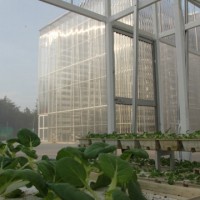
With a population of nearly 5.4 million people on less than 300 square miles of land, Singapore is the third densest country in the world. Once a part of Malaysia, it became an independent nation in 1965, and by doing so, the new island city-state began to increasingly rely on importing food to feed its people.
...MOREFarther Afield: Insect-based feed innovations
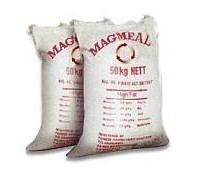
Think about bugs; now think about billions of insects concentrated in one facility. Some might get queasy at this thought; however, that is exactly what is happening at a new 90,000 square foot facility near South Africa’s Capetown. Typical production of protein requires a great deal of water, land and capital.
...MOREFarther Afield: Returning Pinehurst Golf Course to Nature
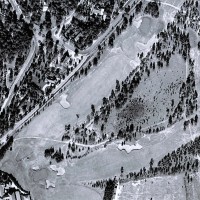
Nestled amongst the sand hills of North Carolina’s Piedmont region, the Pinehurst Resort’s Golf Course has done much to reduce its impact on local water infrastructure. Prior to the restoration, there were 2,100 sprinklers onsite and after the process is completed only 1,400 will remain – a reduction of more than 30% that will lead to a decline of the golf course’s consumptive water use by nearly 40 million gallons per year.
...MOREGowanus Canal Cleanup
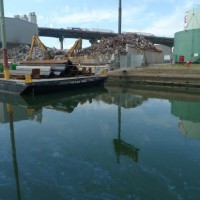
The Environmental Protection Agency has finalized its cleanup plan for Gowanus Canal. The Brooklyn Canal, bound by Park Slope, Cobble Hill, Carroll Gardens and Red Hook, was declared a Superfund site in 2010 and communities have long been pushing for its cleanup.
...MOREReservoir conversions protect water supply, create parks
The City of Seattle is implementing an innovative program to protect their reservoir water supply and create 76 acres of new open space. Seattle Public Utilities (SPU) has already replaced five open reservoirs with underground structures – a system that both improves water quality and provides better security for the water supply – and an additional project is in the works.
...MORE‘Mussel Raft’ aides water filtration
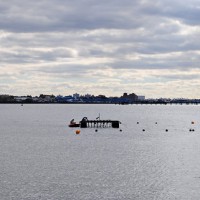
An interesting experiment in water pollution management is taking place in the Bronx River estuary near Hunts Point in New York City. Scientists are testing the use of a ‘Mussel Raft’ for addressing nitrogen pollution from treated sewage that ends up in the water from a nearby treatment facility.
...MORE



